
Hurricane season, that is.
Stretching from June through November, these are the months of the Atlantic hurricane season. And predictions are it’s going to be a doozy. The National Oceanographic and Atmospheric Administration (NOAA) is predicting an 85% chance of a busier-than-average season, with 17-25 total named storms. Of those, 8-13 are predicted to become hurricanes, with 4-7 major hurricanes. For context, that is the highest number of storms NOAA has ever predicted. So, it’s a GREAT time to be in the Caribbean! Why is it likely to be so busy? Well, there are two major reasons: first, the El Nino we’ve been experiencing in the Pacific is fading and giving way to a La Nina. Second, you may have noticed that IT’S HOT! The record-setting heat is not only occurring on land. We are also experiencing record-high ocean temperatures. Those two factors are a bad combination for tropical storm development. La Nina conditions decrease the strength of both the trade winds and wind shear. That allows an area of low pressure to hang together and develop into a storm rather than being torn apart. High ocean temperatures result in more moisture evaporating into the atmosphere, which also promotes storm development.
So, we’re likely in for a doozy of a season. And here we are, right in the middle of the action. “Are you crazy?” you ask? Well, perhaps. We shall see. But we do have a plan.
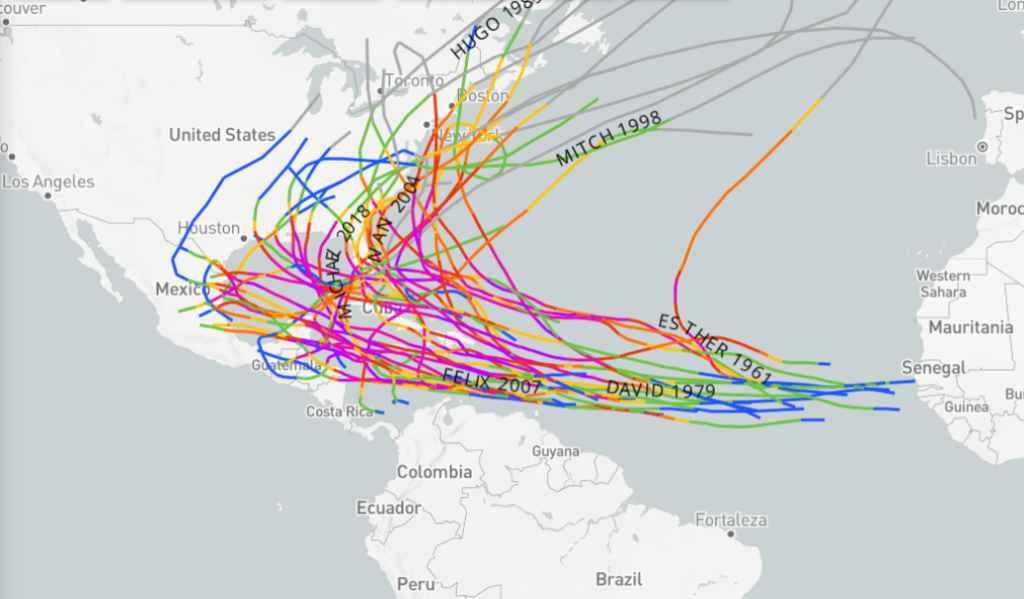
Right now we are in Antigua, which is a hub for cruising and yachting. We’ve seen photos of English Harbour, where we are, packed with boats-too many to count. Right now, it’s nearly empty. Because hurricane season. On the up side, we’re avoiding the crowds. On the down side, it’s a reminder that hurricanes are big, bad, dangerous things and are not to be taken lightly. And we don’t. There are three main approaches to dealing with tropical storms: Escape Hide and Run. Let’s talk about Escape first. With Escape, we take the boat somewhere outside of the hurricane zone. For instance we go north, up the East Coast of the US. It’s true that the further north one goes, the less likely one is to experience a hurricane. However another glance at that map show that the east coast still gets plenty of hurricanes all the up to Maine. So there is no risk-free zone. What about Hide? The theory with Hide is to take the boat somewhere safe, like a “hurricane hole” and keep her there. Here in Antigua, the boatyard is full of boats that have been hauled out of the water and strapped down on land. That’s true across the hurricane belt. Is it true there is much less risk with the boat on the hard? Yes. Is it still risky? Yes. That leaves us with Run. That’s the option we’re going with. The good news is that hurricanes very rarely sneak up on us. With the advanced forecasting tools now available, we almost always have at least 5-7 days of warning before a tropical storm approaches. Often it’s more like 10-14. We can conservatively cover 120 miles per day (probably more like 150). That gives us plenty of time to run away and get out of the area. So we keep our fuel tanks full at all times and we keep tabs on tropical storm forecasting tools every day. Plus, we keep a marine weather forecasting service on retainer to provide custom forecasts for us. There are a couple more factors in our favor: first, although hurricane season runs from June through November, the vast majority of the activity occurs mid-August through late October. So we still have a few weeks before things really get going. And, we are heading south. The further south we go, the lower the risk gets.
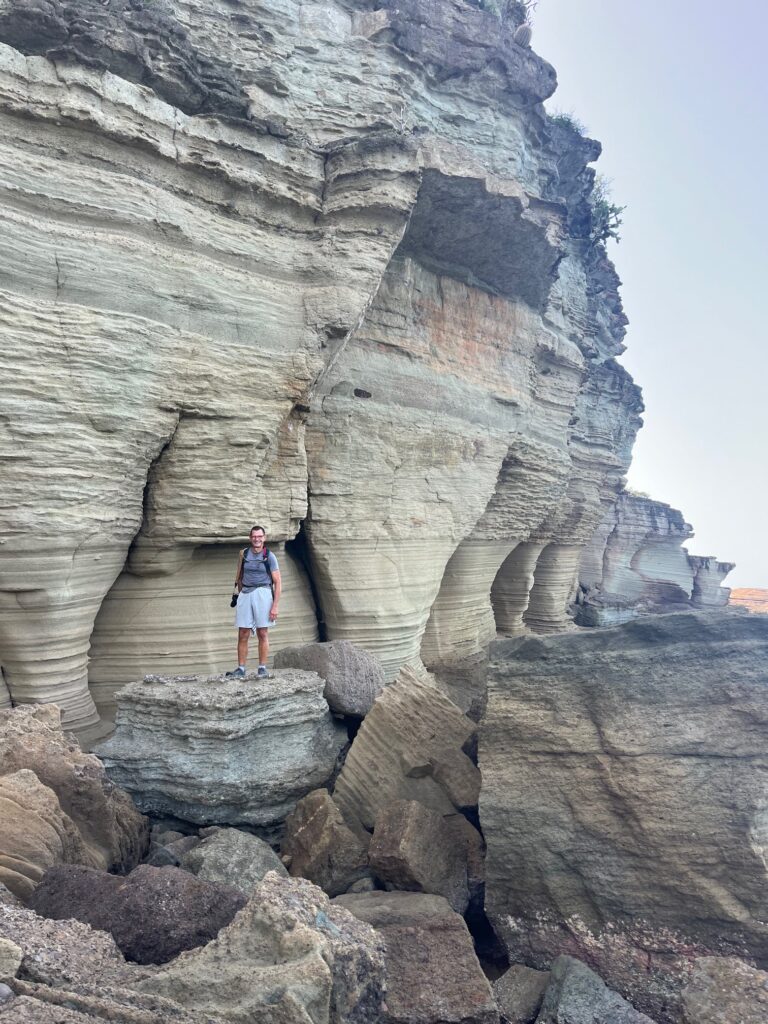
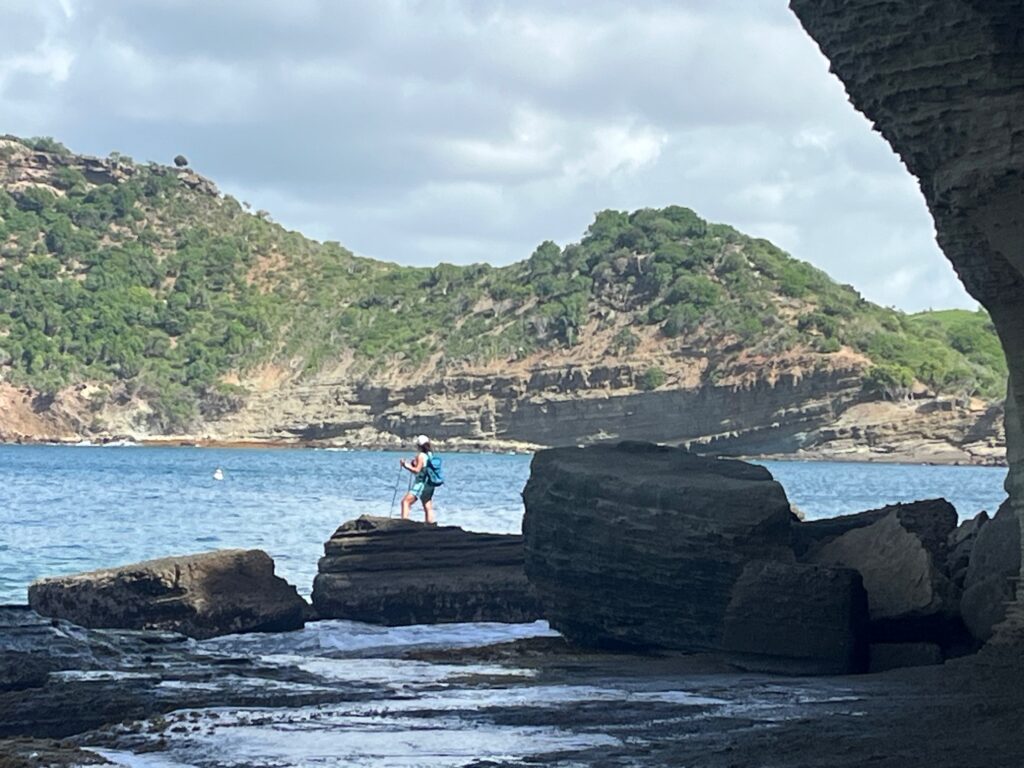
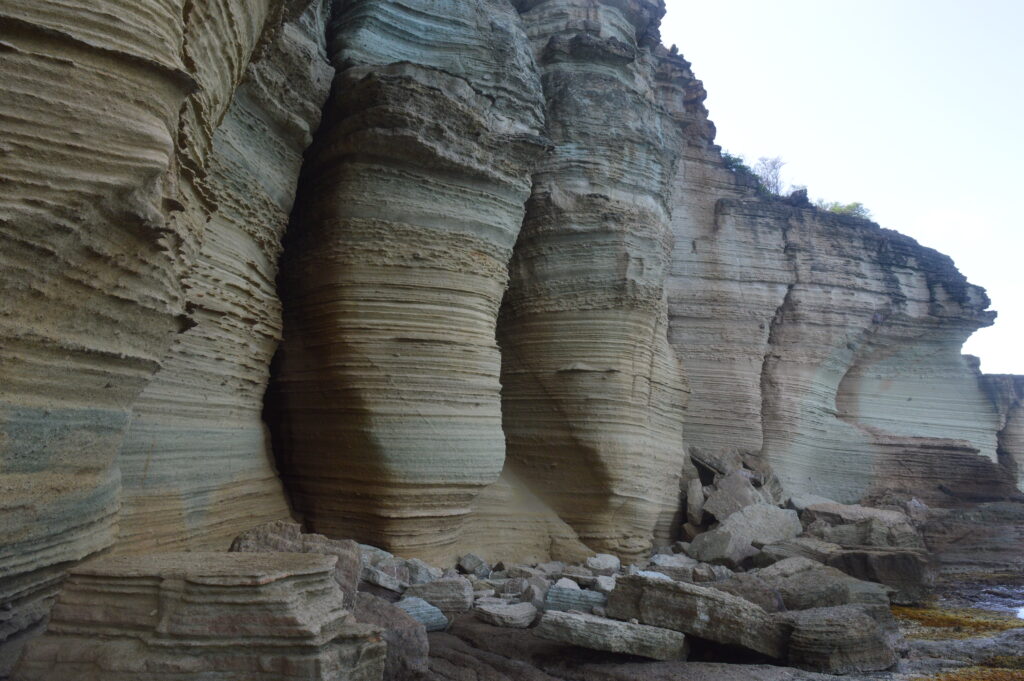
Hiking the Pillars of Hercules, Antigua
So that is our hurricane plan. It’s the first time we’ve ever done this, so we hope it’s the right choice. If not, there’s always the life raft. (KIDDING! We would leave the boat and take shelter on land before that.) In the meantime, we continue to explore these gorgeous places and get to avoid the crowds.
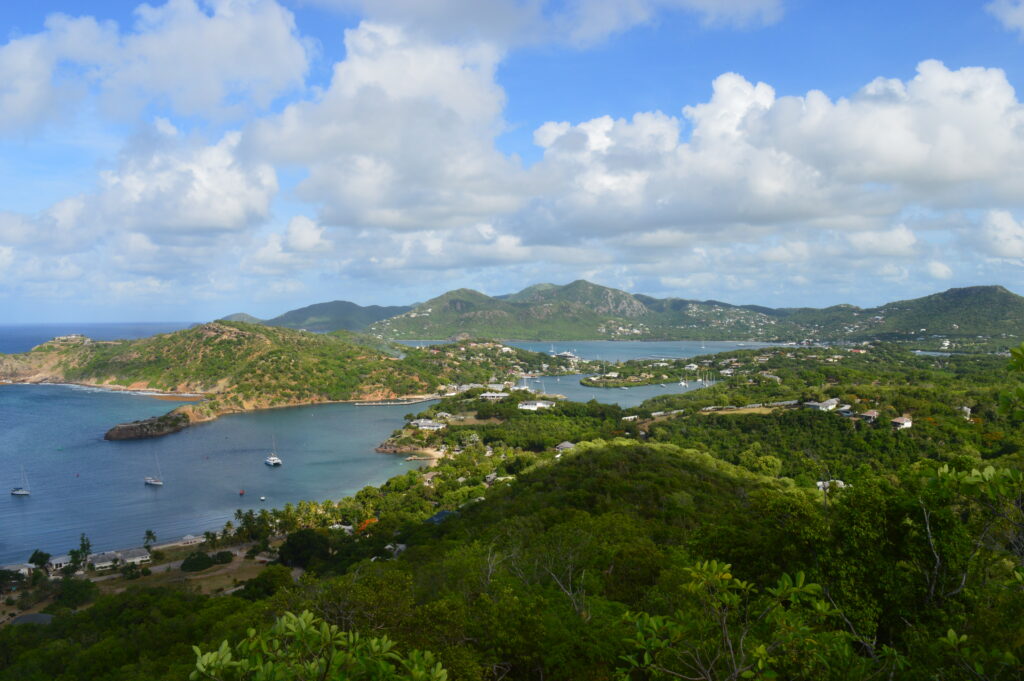

June 23, 2024 at 12:47 pm
We agree with the run plan!
And get out early for sure.
Fingers crossed!
June 26, 2024 at 11:01 pm
We know you do! You too!
June 23, 2024 at 3:02 pm
Please be careful and run !!
June 23, 2024 at 7:03 pm
Run away! Run away! Good plan!
June 24, 2024 at 8:13 pm
I remember English Harbor in Antigua. There was no hurricane. It was where we finished up our charter. With the 4 masted schooners anchored in the harbor, it was quite a sight. They were teaching schooners from various countries. We spent 2 days there, but never went to the Pillars.
Best of luck with the hurricanes. Hopefully you’ll stay clear of them.
June 26, 2024 at 11:01 pm
Thanks!!